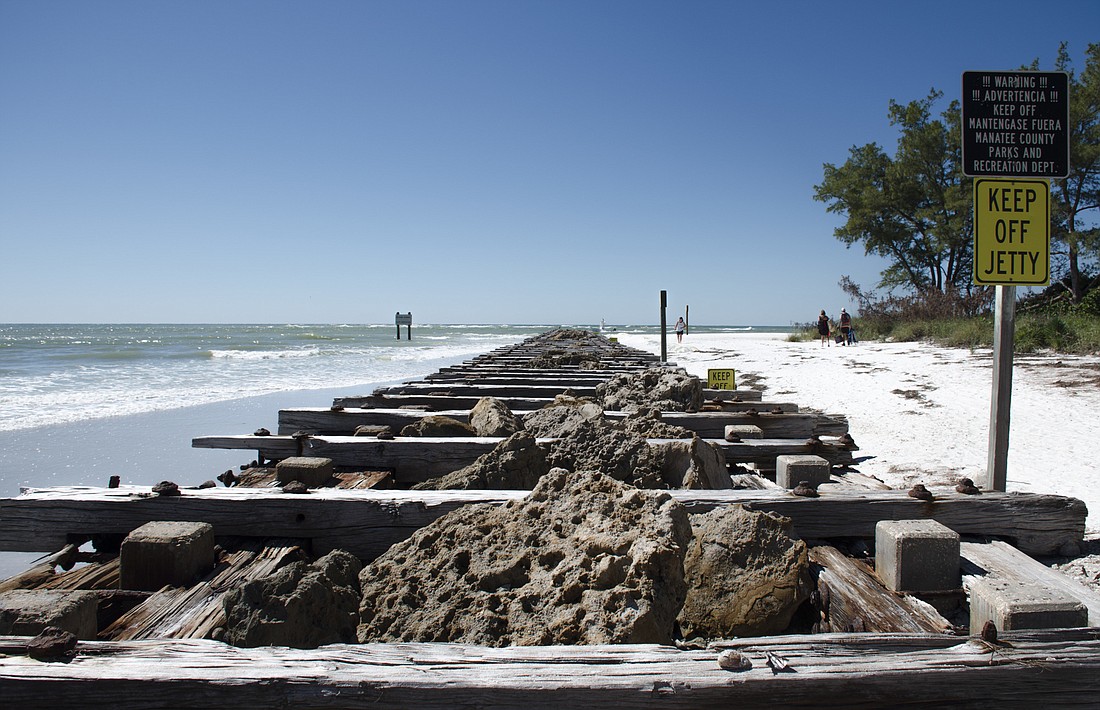- December 28, 2024
-
-
Loading

Loading

The decades-old rock and timber barrier keeping the south end of Anna Maria Island from drifting into the Longboat Pass has been in better shape.
Rusted iron spikes protrude from massive beams left to degrade in the sea breeze.
Chipped concrete columns support the almost 500 feet of porous stone and lumber that has baked in the Florida sun for nearly 60 years.
“It’s been a good workhorse,” Charlie Hunsicker, director of the Manatee County Parks and Natural Resources Department, said of the barrier groin.
And for that reason, Hunsicker initiated a plan to replace the jetty at Longboat Pass with a new structure that is more resilient and less porous, meaning it would allow less sand to filter through the barrier from Coquina Beach into the shallow inlet, which makes it difficult to navigate.
By the time the project is complete, Hunsicker said it could cost anywhere from $3 million to $5 million. He said Longboat Key will not pay for the project — the proposed benefit is intended for Coquina Beach.
The problem now is that the jetty is leaking, Hunsicker said. Although it wasn’t designed to be impermeable, Hunsicker said decades of structural neglect were spurred by one powerful fact: The groin was doing its job.
The jetty was never designed to hold every grain of sand on the beach, Hunsicker said. Longboat Key’s former Public Works Director Juan Florensa said the jetty was constructed to stabilize the end of the Longboat Pass and keep sand from getting trapped in the channel, fouling navigation.
But when the county began its renourishment program on Coquina Beach — an expensive process of replacing lost sand on the south end of Anna Maria Island — officials started to realize it would be more cost effective to have a barrier that didn’t let sand seep through, Hunsicker said.
So Manatee County installed a temporary bio-tube filled with sand to create an impermeable barrier that could last up to three years. This would test the effectiveness of an impervious wall in regard to sand retention, Hunsicker said.
That was six years ago, he said.
Now the sand barriers are starting to fail, Hunsicker said. But the county has proved its point, he said. A nonporous barrier at the end of Coquina Beach is effective for sand retention and has not drastically changed the ecological system.
“The permit-review engineers who will approve the design said, ‘If you rebuild the groin as a rock groin over the same footprint, now that you’ve demonstrated the validity of the impervious water flow, we will let you move forward without further testing,’” Hunsicker said.
That could save the project a year and some $80,000, Hunsicker said.
The first phase — design and permitting — has been estimated at a cost of $275,000, according to a funding request Manatee County sent this summer to the Florida Department of Environmental Protection. It has asked the state to pay $206,250 of that.
A proposed schedule in the request suggests the construction project could finish by 2020 if funding comes together as proposed.